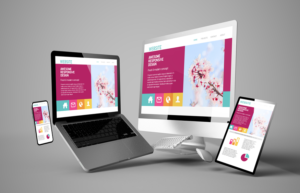The success of a website depends entirely on how it is designed. Whether the designers took utmost care or not while developing it. Your well-designed site that includes usability and utility determines success, not visual design. Since your site is the face of your business and most potential customers will visit your site before they take a look, it becomes inevitable to design your website carefully. Missing out on any aspect could end up demolishing your brand impression.
Web page design is more critical to conversions than you might think. Despite using a great conversion boosting tactic, there’s not much you can do if it looks shoddy. In fact, website design does not necessarily mean how it looks and feels, but is how it functions and how it is perceived by users. You should know that our web design agency in Casablanca prefers to make a site more attractive because it is the showcase of the company and for that, you must follow certain rules to have a good website design.
The views of users of these websites are also higher than those with poor user experience.
How to design a good website?
Good website design requires a wide range of professionals with expertise in different fields. Their collective efforts must be deployed when there is a crucial decision to be made. In this article, we will describe the 8 essential principles of good website design that must be considered when developing a website. These design principles will definitely help web designers develop impressive designs and improve the usability of a website.
Here is the list of 8 good design principles that will make your website aesthetic, user-friendly, efficient and engaging:
1. Simple is best
Putting too many elements on the page can lead to distracting visitors from the main purpose of your website. The clean and fresh design of your website not only makes the website attractive but also helps the user navigate from page to page seamlessly. Loading a website with design features that don’t serve the purpose can be frustrating. Keep your design as simple as possible so visitors can feel it easy to use and can find their ways easily.
2. Uniformity
Consistency in website design is very important. Give your attention to the pairing of design elements in each of the pages. It is understood that your fonts, sizes, headings, subheadings and button styles should be the same throughout the website. Plan everything in advance.
Finalize the fonts and the right colors for your texts, buttons, etc, and paste them throughout the development CSS (Cascading Style Sheets) would be useful to keep the information complete on styles and design elements.
3. Typography and readability
No matter how good your design is, the text still rules the website as it provides the users with the desired information. As crawler search engines are very familiar with this data, it becomes an integral part of SEO activities. You should keep your typography visually appealing and readable for visitors, with careful use of keywords and other SEO-sensitive elements.
Consider using fonts that are easier to read. Modern sans serif fonts like Arial, Helvetica etc. can be used for body texts. Make appropriate combinations of fonts for each design element, like titles, body texts, buttons, etc.
4. Compatibility with mobile devices
Keeping in mind the ever-increasing use of smartphones and tablets, web design must be effective for various screens. If your website doesn’t support all screen sizes, chances are you’ll lose the battle to your competition. There are a number of web design studios or outlets from where you can turn your desktop design into responsive and responsive for all screen sizes.
5. Color palette and imagery
A perfect color combination attracts users while a wrong combination can lead to distraction. It forces you to choose a perfect color scheme for your website which can create a pleasant atmosphere, thus leaving a good impact on the visitors. Enhance user experience by selecting a complementary color palette to give a balanced look to your website design. Remember to use white space as it saves your website from visual clutter and clutter. Also avoid using too many colors. 3 or 4 tones for all websites are ample to give an attractive and clear design.


